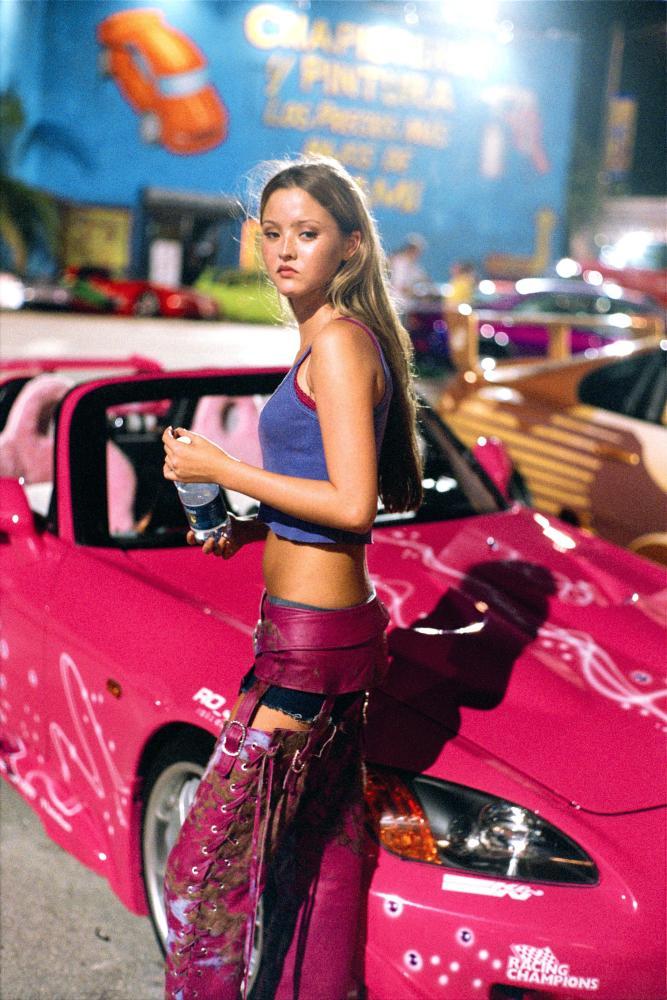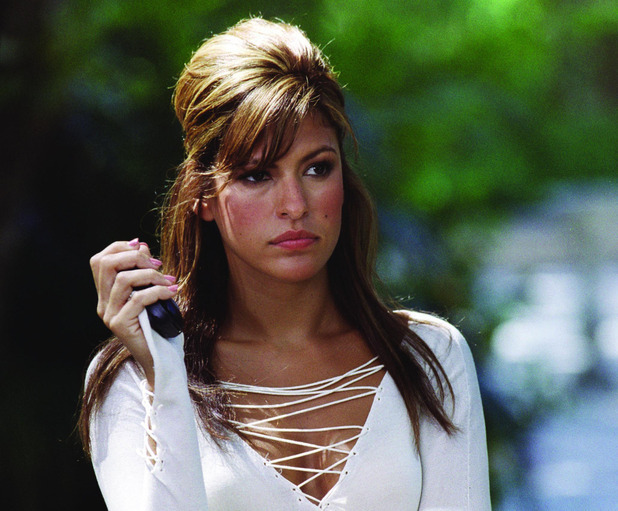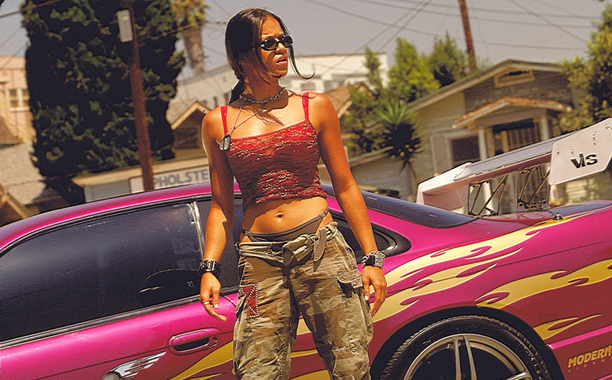What do you get when Vin Diesel, Paul Walker and Ludacris drive into a multi-story carpark? A multi-million dollar film franchise that’s been going strong for 15-years.
Vin Diesel and the gang are gearing up to premiere the series’ eighth instalment this year. With each chapter growing glossier than the last, it’s easy forget that the earlier films in the super-sized series weren’t slick blockbusters. The first three movies —The Fast and the Furious (2001), 2 Fast 2 Furious (2003), and The Fast and the Furious: Tokyo Drift (2006) — were, for lack of a better word, pretty edgy.
The films were about rebellion, scams and subculture. Very timely stuff, no? The drag-racing characters’ wardrobe were informed by fringe communities of punks, ravers, sadists and masochists. 15 years later, those subculture have returned to fashion’s forefront.
After all this time, perhaps we’re due to give the Fast and the Furious some serious sartorial credit. You can even argue that those early films heralded some of today’s best and brightest trends. Don’t believe us? Try these on for size.
Fetishwear Goes Mainstream

gave us i-D covergirl Devon Aoki as drag racer Suki. It was her first major Hollywood role, and given her fashion credentials, costume designer Sanja Hays trusted the model with the most forward looks in the film: from leather chaps to bumsters that would do McQueen proud.
Today, fetishwear is more en-vogue than ever, and we suspect there are thousands of people pining over Devon’s trousers each time they inevitably appear on the Instagram explore page.

Fetishwear’s rise-and-rise can be credited (in part) to our newfound collective willingness to talk about our kinks, and by extension, the clothing that comes along with them. The internet, of course, has also been instrumental: the BDSM community is more easily discoverable than ever, through tools like Tumblr and Instagram.
Consider the skyrocketing popularity of Atsuko Kudo’s latex dresses, or Zana Bayne’s leather harnesses. Y/Projects‘ denim chaps have even enticed the Vetements generation to try out the fetish staple. As fashion designers dig deeper into the underground for inspiration, expect tight-laced leather and shining latex to remain runway and red carpet fixtures.
The Higher the Hair, the Closer to God

In 2 Fast 2 Furious, Eva Mendez was undercover agent Monica Fuentes. Despite her character’s high pressure job and shortage of leisure time, Mendez was never caught without a fresh-out-the-salon blow wave.
The backcomb has always been good barometer of fashion’s broader mood. It can answer the question is restraint in, or out? Fashion has always broadly oscillated between maximalism and minimalism, and that applies to everything — garments, beauty, and grooming. In the 80s, excess was in: the only thing bigger than the blow-outs were the supermodels sporting them. As minimalism regained favour in the 90s, hair deflated; it was pin straight or pulled back tight.
Today, as super-sized models return (this time around, rebranded as the ‘social supers’) it seems the bouffant is back too. Its homecoming came in the spring/summer 17 season, and can be credited to two popular fashion powerhouses: Jeremy Scott and Rihanna. Scott’s Moschino spring/summer 17 collection made a good case for bringing back the beauty queen blow-out, while Riri’s take — inspired by Marie Antoinette — was more 18th century. Fittingly, some historians say Antoinette was the first influencer to ever have the bouffant trending.
Return of the Rave

Boiler suits and cargo pants were the bread and butter of the early films. Michelle Rodriguez’s character first appears in low slung cargo pants, heavy New Rock boots and dog tags. Similarly, in 2 Fast 2 Furious Ludacris is never seen outside of a spotless boiler suit — both garments are fast becoming fashion staples once again.
The resurgence of utilitarian dressing, as if the apocalypse is just around the corner, has everything to do with the fashion world’s renewed obsession with club culture. During LFW, i-D’s Anders Christian Masden declared collections had gone “nightclubbing,” with most references pointing to the ravers of the 90s.

Members of the UK rave scene, like techno pioneers Altern 8, were some of the first young people to repurpose military castoffs. It was largely due to the physically demanding nature of throwing bootleg warehouse parties, but to this day, club style feels decidedly apocalyptic: Nasir Mazhar’s militarised, future-gazing clubwear is a prime example. At LFW: Mens, Liam Hodges’ autumn/winter 17 show celebrated illegal raves, and — in the words of our own Felix Petty — Gordon Richardson’s autumn/winter 17 Topman Design collection nodded at “rave holidays and techno in Berlin.”
I See London, I See France…

In a crucial 2 Fast 2 Furious scene, Eva Mendez’s agent Monica Fuentes drags Paul Walker’s Brian O’Conner through a Miami club, with a lace bra emerging from her bias-cut silk slip: that’s a pairing that hasn’t dated a day. In 2016, bustiers, corsets, and bras have all been okay’d as outerwear.
Prada can largely be thanked for the return of the corset, a trend set in motion by their autumn/winter 16 show. Miuccia took the former symbol of restriction, once used to cinch teenage girl’s waists to a remarkable 16 inches, and had models wear gentle linen version on the outside of their clothing. The new styling ushered in a new, liberated chapter for the garment.
Back home home, Daisy’s leather bralettes continue to reframe visible lingerie as valid accessory, not the result of a strong gust of wind.
